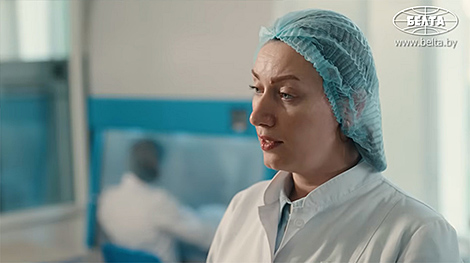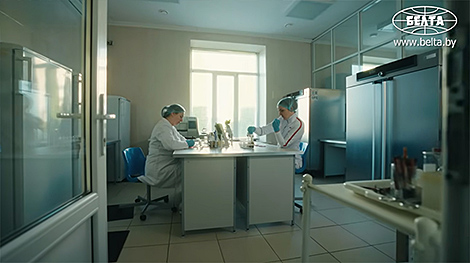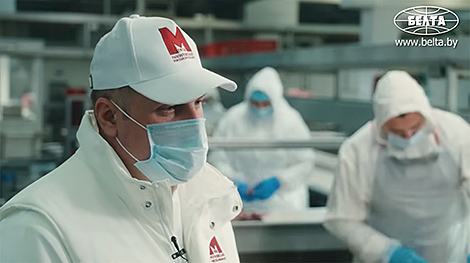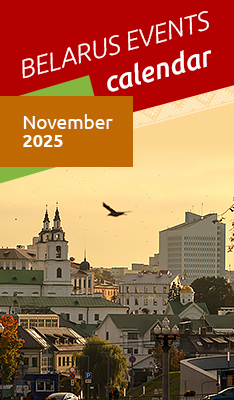Business news
Recipe and production secrets of goat meat sausage that earned top marks from Aleksandr Lukashenko

The best motivation for any enterprise is positive feedback from its customers. If your product has gained the praise from the head of state, it's a great responsibility. Now you are accountable for the quality of your product to customers, you might say, at a state level. In July 2025, Belarusian President Aleksandr Lukashenko went on a working trip to Mogilev District where he toured a goat breeding farm. There, the head of state sampled not only goat's milk but also the meat, a treasure trove of vitamins, amino acids, and proteins. This product is manufactured by Mogilev Meat Processing Plant, and judging by the president's feedback, the enterprise did very well. So let’s discover the recipe and production secrets of the dish that earned top marks from Aleksandr Lukashenko.
What are goat breeds in Belarus?
For several years, pedigree goats have been raised in Mogilev District. It started as a goat farm and later received the status of a pedigree breeding farm. It has been working to create pedigree herds with high genetic potential in the country. This will enable to replace imports of goat breeding stock and start exporting a new type of breeding product.
The breeding farm currently maintains a herd of 700 Alpine and Saanen breed goats. The Alpine goats are more graceful and sleek, but that is, of course, a subjective opinion. The goats are friendly and high-yielding and this is a fact.


“The average daily yield is 3 to 3.5 liters per head for both breeds. The fat content varies from 3.2 to 3.5 percent. Currently, we sell milk to Babushkina Krynka for cheese production,” said Nikita Zelinsky, manager at the goat breeding farm.

The farm in Mogilev District was established under the Agricultural Business state program. The breeding goats were imported from Austria. The animals are easy to care for and can withstand even harsh weather conditions. Belarus aims to increase the population of goats with high genetic potential and thus to develop this branch of animal husbandry. This means all the breeding stock here is hand-picked. Animals must be perfect. Any with defects are removed.

“We look at the goat’s appearance and the criteria by which breeding animals are evaluated. If a goat is not up to the standards, it negatively impacts milk quality, which is why such goats are culled,” Nikita Zelinsky said.
How goat meat sausage is produced
It is precisely the culled animals that are used for meat. After slaughter and cooling, specialists conduct sampling to monitor microbiological and physico-chemical indicators.
“We can check the protein content in raw material. But the absolute foundation is microbiology. This involves testing the microbiological indicators,” Inna Leonenko, head of the production laboratory at Mogilev Meat Processing Plant, said detailing the process.

Simply put, specialists check whether the meat contains any bacteria or viruses that could cause infections in humans. If all results are normal, the raw material is sent for production. It all starts with deboning. The specialist's task is to separate meat from the bones, as explained by Vitaly Tretyakov, who has been working as a deboner at the enterprise for 24 years.
“The main thing is strong hands. Physical health. And the right attitude,” he said.


A goat carcass typically weighs 35 to 40 kilograms - less than the more common pork or beef. But this hardly makes any difference in the work.
“There is practically no difference. Only the bones are smaller, which makes the process slightly more labor-intensive. Otherwise, the two processes are essentially the same,” Vitaly Tretyakov said.
It takes approximately twenty minutes to process one carcass. The next stage is trimming – a painstaking and time-consuming process. “Everything must be carefully trimmed. Tendons and any waste must be removed,” meat trimmer Marina Savchina noted.
According to lead engineer Vyacheslav Mychko, this type of goat has no odor and there are no special requirements for its processing.
“The only thing is that the carcasses are a bit smaller, so the process for meat boners takes a little longer. For trimmers it is somewhat easier, as goat meat is considered to be a single grade. Unlike pork or beef, which are divided into several grades,” he stressed.

In fact, the sausage recipe is simple – that’s a good thing. After all, when we read the ingredients of a product, we look for one with the least number of additives. We don't want anything superfluous.
“The sausage that Aleksandr Grigoryevich [Lukashenko] tried is 40% goat meat. There’s also 40% of semi-fat pork, and 20% of back fat. And of course, all spices are natural,” the lead engineer revealed the recipe.

The sausage mixture is prepared in the machine room. All the ingredients and spices are loaded into this special mixer, and then it works autonomously. After the sausage products are formed, they are sent to the thermal processing section. The first stage is drying at 65°C, followed by the second stage – smoking, also at 65°C. The final stage is cooking at 80°C.
The entire process takes about a day and a half. The finished product undergoes more extensive physicochemical analysis: the number of parameters is greater than during the inspection of raw materials. It takes two days.


“We have determined the mass fraction of moisture, salt, protein, fat, sodium nitrate, phosphorus. And microbiology is the same indicators in addition to QMA&OAMO. It is the total number or total bacterial content [this parameter is used to determine the product’s sanitary and hygienic status by evaluating the total number of microorganisms],” Inna Leonenko said.
Benefits of goat meat
There are legends about the wholesomeness of goat milk. But the meat is forgotten for no reason. In folk medicine goat meat is considered useful for enhancing the immunodefence and is recommended to the elderly. Science substantiates that.

“It is very low in calories and contains very little cholesterol. This is why athletes can consume it and it can be used to make baby food as well. There are a lot of vitamins in it and amino acids that are irreplaceable for the human body. It is also very useful for feeding children as school meals,” Vyacheslav Mychko pointed out.
For Mogilev Meat Processing Plant the sausage with goat meat is a new product. So far slightly more than 160kg has been made. But this product definitely has prospects thanks to healthy eating trends.

By the way, about 48,000 goats are kept in Belarus in all kinds of farming enterprises. Of them 93% are kept by private farmers while the remaining 5% are kept by agricultural enterprises. It will be necessary to seriously improve the latter figure. Aleksandr Lukashenko believes that although stock breeding is in progress in the country, the results are not impressive. He wants faster work and large agricultural enterprises all over the country to develop goat husbandry.








 print version
print version make home page
make home page add to bookmarks
add to bookmarks

